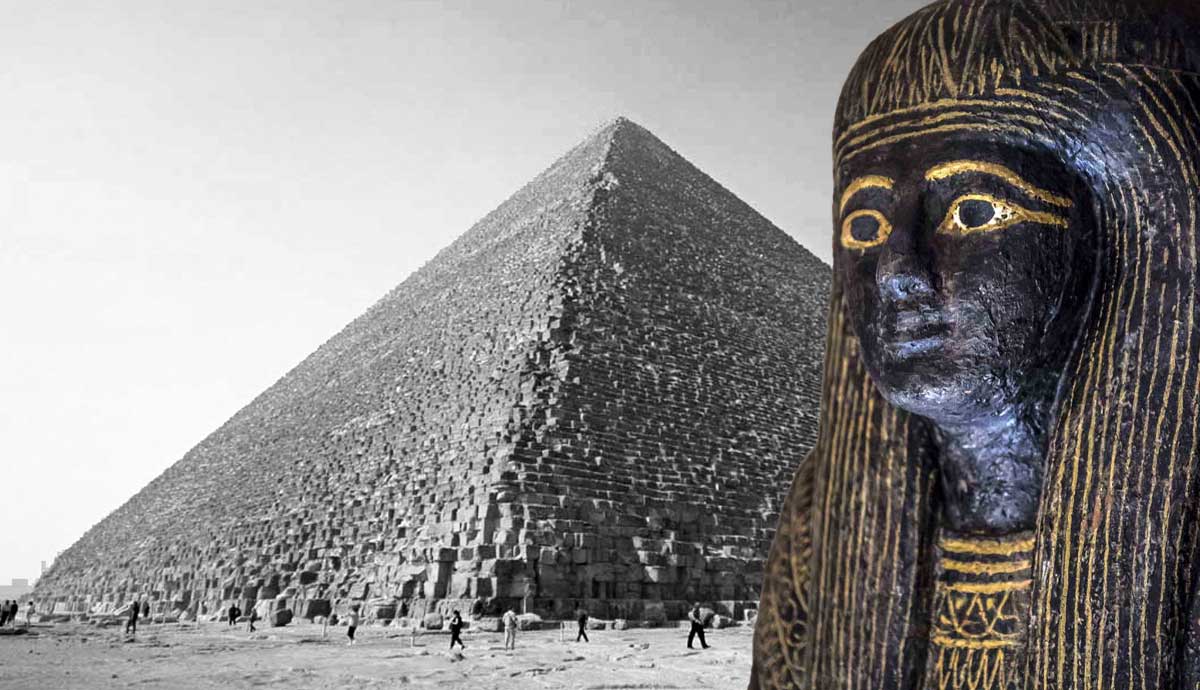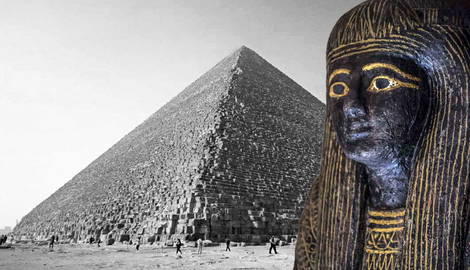
When we think of the word pharaoh, many of us conjure up mental images of Tutankhamun, Ramesses, or in some cases, Cleopatra. However, when researching the history of the rulers of Egypt, women are largely excluded, and a pharaoh is almost always pictured as a male. Sobekneferu was the first female Pharaoh to rule Egypt in her own right, but despite this, her story is missing from many history textbooks. It is therefore necessary to uncover the history of these female pharaohs as they played a vital part not only in the political history of Egypt but also in the history of the world.
Sobekneferu’s Claim to the Throne

Sobekneferu (also Nefrusobk, Neferusobek, Sobekkara) ruled as king of Egypt from 1760-1756 BCE and was the last King of the 12th Dynasty (1938-1756 BCE). Her name means “beauties of Sobek” and relates to the crocodile god. The kings of the 12th dynasty had made Fayoum their economic and religious center, and it was here where crocodiles were worshipped and cared for.
The structure of Egyptian royalty was undoubtedly meant for men. The Pharaoh was seen as the earthly manifestation of the male god Horus, and it was normal and expected that the king would be succeeded by his eldest son. However, fate would have it that every so often, this system failed, and a woman found herself on the throne of Ancient Egypt.
Sobekneferu’s father was Amenemhet III; however, it is unclear which of his wives was her mother. With her father’s death, the throne passed to her (maybe half) brother, who by this time was getting on in life. Some have claimed that her brother was also her husband; however, the evidence for such a claim is somewhat hazy.

When her brother died without an heir, the throne was left empty. By blood, Sobekneferu was the closest in line to the throne and therefore took her brother’s place. She took on royal titles and ruled as king. However, she never used the title “king’s wife,” which would have implied she married her brother.
When she was made pharaoh, Sobekneferu went through the customary naming ceremony and was given five names as used by pharaohs. At this time, she chose the reference to the crocodile-headed god, Sobek. Sobek was linked to pharaonic power as well as military prowess and fertility.
It seems she had an elder sister named Neferuptah, who was groomed to rule. However, she died before Amenemhet III, so the throne passed to the girls’ brother. It seems that Amenemhet III was prepared to have a female heir in this case.
The evidence for this comes from the cartouche, which was invested around Neferuptah’s name. This would have been an action reserved for kings alone. She was also presented with titles used by a king’s wife, although she never married a king. Unlike her sister, we know that Neferuptah was buried with her father in his burial chamber. Unusually, she was never reburied in her own pyramid, located not far from there.
According to the Turin canon, Sobekneferu reigned for three years and ten months. It states that while on the throne, she extended Amenemhat III’s funerary complex in Hawara (or the Labyrinth as named by Herodotus). It also says that she oversaw building work at Herakleopolis Magna.
The First Female Pharaoh?

Some claim there were a handful of female pharaohs prior to Sobekneferu. One of the earliest was Merytneith (1st dynasty). It is thought that she was the wife of Djet and acted as regent for her son, Den, in his early years. While this gave her some ruling authority, it did not actually make her ruler in her own right, as Sobekneferu was.
Another rival to the claim of being the first female pharaoh is Khentkaues I (4th dynasty). On the doorway of her tomb in Giza, there is written a title which can be translated to either “Mother of Two Kings” or “King and Mother of a King.” There are also images of her that show her in king-like poses and even wearing a false beard!
Like Merytneith, it is possible that she ruled when her son, Sahure, was too young to rule himself, possibly alongside Userkaf (founder of the 5th Dynasty). She was also commemorated in the pyramid of Khentkaues II, but her name cannot be located in a royal cartouche. Furthermore, most modern lists of Egyptian rulers do not include Khentkaues either.

Another contender for the title of the first female pharaoh has been found in records from much later, written by the Egyptian historian Manetho. He mentions a woman named Nitokris, who he claims built the third pyramid (we know now this was not the case).
Herodotus also mentions a woman by the name of Nitokris. He states that, in order to avenge the king (her brother), she gruesomely murdered hundreds of Egyptians. Nitokris built an underground chamber where she lured her victims to a banquet. After the banquet had begun, she flooded the chamber using river water brought in by a pipe. According to Herodotus, in order to avoid the punishment of doing so, she killed herself. However, his account does not attribute the third pyramid to her as Manetho does.
The sources of Herodotus’ claims, however, are dubious. The name Nitokris is a Greek version of the Egyptian Nitiqreti. There is evidence of a king by this name in the Turin king list from the 19th Dynasty. The name is also present in a 6th Dynasty papyrus.
At first, many scholars of Ancient Egypt thought the name must have belonged to a great queen. Unfortunately, work on the misplaced parts of the papyrus has revealed that the name is actually part of the titulary of the male king Siptah.
Therefore, it remains that it was not until the Middle Kingdom that there was clear evidence of a female ruler in her own right, and that ruler was Sobekneferu.
Depictions of Sobekneferu

Her reign is memorialized today in a collection of depictions of Sobekneferu. These include some monuments and artifacts, as well as five statues and fragments from the mortuary temple of Amenemhat III. There is also a Nile inundation record as well as scarabs, seals, and beads.
She linked herself to her father, Amenemhet III, in many of her monuments. One example is the depiction of a serekh (essentially a royal crest) which shows Amenemhat III holding the ankh (the hieroglyph meaning life) to Sobekneferu. This seems to depict the legitimacy of Sobekneferu’s claim to the throne. Some scholars have interpreted this image as depicting a co-regency between the two.
Her statues also show Sobekneferu in full royal regalia as a male king would have worn, posing in royal positions. In one image, she is even shown wearing a sheath dress and a male kilt, and in another, wearing a sed festival cloak. There is also an image that shows her wearing what has been considered by many as an unusual crown. Some have argued that this strange headpiece may have resulted from an attempt to combine the crowns of both a king and a queen. The statue is held today in the Metropolitan Museum in New York.

Three statues without heads have been discovered in Fayoum and are thought to be Sobekneferu. One depicts her, much like the crown mentioned above, in elements of both male and female dress.
While many of the images show her wearing male clothing, there is no evidence that she was trying to pretend to be a man. Most of the time, she used female suffices in her titles. Despite this, some scholars have argued that in wearing male clothing, she was attempting to pacify those who criticized her rule as a woman. Meanwhile, others have gone as far as to argue that she saw her own gender as an embarrassment and was attempting to hide it.
In answer to these arguments, Carolyn Graves-Brown, Joyce Tyldesley, and Gae Robins have all argued that it was simply her desire to be seen as a traditional pharaoh that drove her to such choices, and it, in fact, had nothing to do with her gender. In order to adhere to traditional aspects of being a pharaoh, she was forced to adhere to male markers because pharaohs before her had only ever been male.
Sobekneferu’s Death

Unfortunately, Sobekneferu’s burial place is unknown. Some have suggested that it may be in a damaged pyramid complex located near Amemenhat IV at Mazghuna. Aidan Dodson, however, has argued that there is no evidence of this claim.
Sobekneferu is remembered today as the last Egyptian king of the Middle Kingdom. She was also the last ruler before the New Kingdom to appear in the lists found at Abydos and Saqqara. Despite ruling for less than four years, she was the first female pharaoh to rule with full royal titulary and to be recorded in the Turin King list.








